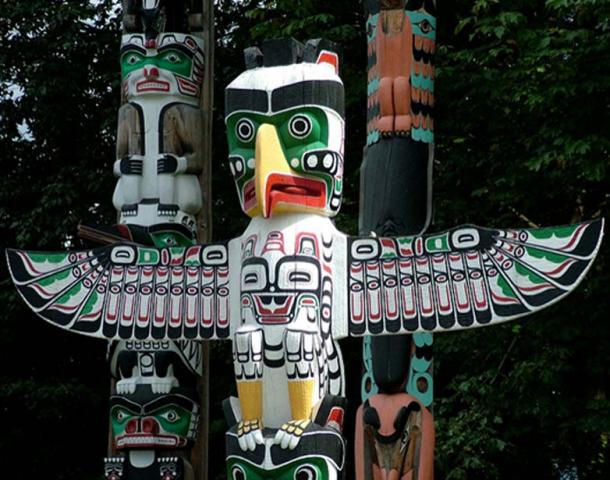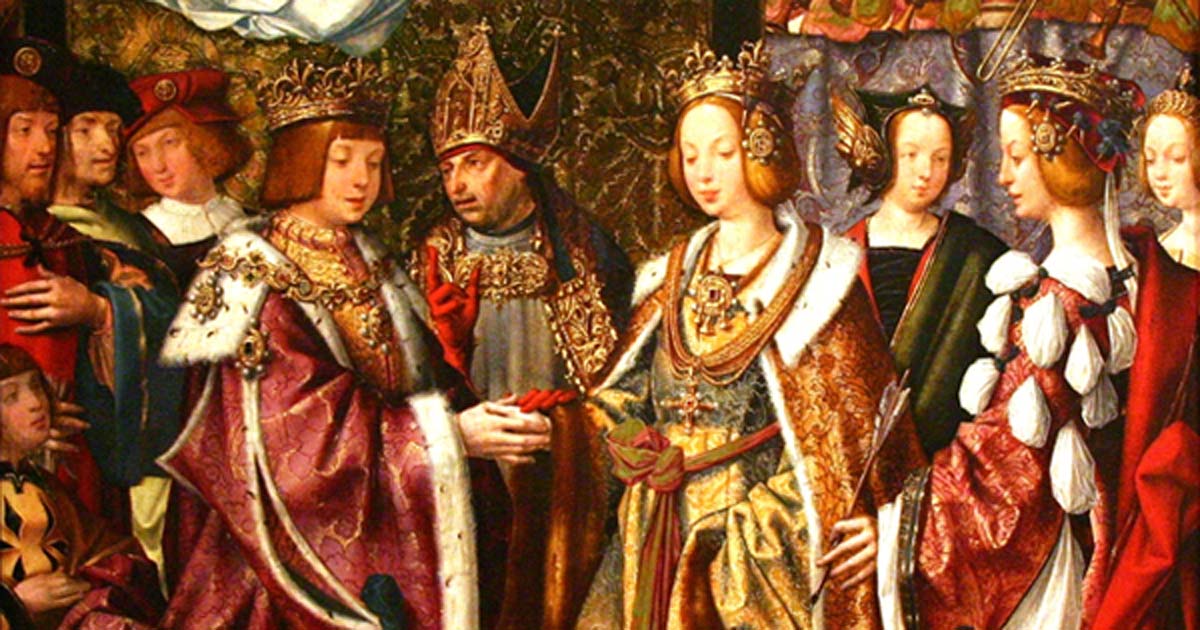Marriage: Is the Sacred Bond a Result of Social Evolution or Deliberate Design?
Getting married is an age-old celebration, which commemorates the joining of two individuals together in matrimony. For many in today’s society it represents picking out invitations, dresses, decorations, food and flowers, and finally ‘tying the knot’. Yet getting married is more than just fun and frivolities. It is a ritualized contract that forms a legal partnership between the individuals. This contract establishes the rights and obligations between the happy couple and those of any potential offspring.
Marriage is heavily steeped in local customs and religious dogma. It is believed that the institution of marriage found its origin in the ancient world as a means of preserving power, forging alliances, acquiring land, and producing legitimate heirs. It is also seen as a way of organizing families, and like most other social institutions, this time-honored tradition has evolved over the centuries.
So where did the ancient rules of marriage come from? What was their foundation?
Origins of Marriage
The earliest evidence supporting marriage, and the marriage contract, dates back about 4,000 years to Sumerian law, and is documented in the Code of Hammurabi. This ancient legal codex contains 33 specific edicts that establish the rights and obligations of married couples and cover topics including bride-price, divorce, marital debt, incest and adultery. The well thought out concepts contained within this early text make it clear that the rules and regulations associated with marriage have a much older past.
- Putting a Price on Marriage: The Long-standing Custom of Dowries
- Pleasure, Procreation, and Punishment: Shocking Facts about Sex and Marriage in the Ancient World
- The Babylonian Marriage Market: An Auction of Women in the Ancient World

The upper part of the stela of Hammurabis' code of laws. (Public Domain)
As we delve into the roots and history of marriage, a number of interesting facts quickly emerge. Early explorers, as they traveled the globe to investigate indigenous cultures, unearthed revealing information regarding marriage. They discovered that even the most remote, seemingly primitive groups they interacted with had well defined systems that regulated marriage as well.
If we look at our nearest relative in the animal kingdom, the chimpanzee, the concept of monogamous pairing does not exist. It is not part of their genetic makeup. They do not possess an inner drive that propels male and female chimpanzees to bond with one another. Instead of creating a loose marital bond, their predisposition is to randomly mate with multiple partners.
If the compulsion to bond with our mate is not part of our genetic makeup, did we, as part of human social evolution, create societal rules to regulate marriage? If we did, one would expect the conventions, rules, requirements and obligations surrounding marriage to fluctuate from place to place and community to community.

Hymenaios, God of wedding ceremonies Room 3 of the Baths of Neptune, Ostia Antica, Latium, Italy. (CC BY 2.5)
Dr. Ashley Montague, a noted British-American anthropologist, stated, “ There are no societies in which marriage does not exist.” He goes on to state, “ If marriage developed in a random, haphazard, evolutionary fashion, one might expect that ‘marriage’ would be found in some cultures but not in others. The evidence, however, simply did not support that view.” The early systems of marital laws he uncovered were remarkably consistent around the globe, so consistent that early pioneers in the world of anthropology stated that this tradition bears the stamp of “deliberate design”.
Social Controls and Taboos
The indigenous groups that were surveyed, in these early explorations, revealed a system of social control, which they believed, existed prior to our modern laws and other government-implied sanctions. They believed that these primordial rules, or taboos, evolved until they were codified into religious commandments and secular laws, many of which have survived until today.

Toiletry and Wedding. (CC BY 2.0)
Taboo (tabu/tapu) is a Polynesian word that is associated with a person, place or thing that is prohibited or banned. These prohibitions were impressed upon individuals at an early age and were maintained generation after generation. A vast number of things have a history of being universally prohibited. Some include touching or being exposed to a corpse or menstruating woman. These were perceived as being unclean and contact with them was forbidden. Two of the oldest, longest lasting and most consistent taboos found around the world revolve around having sex with a married woman (adultery) and having sexual relations with someone from your own clan. Both were expressly forbidden.
Adultery, a Forbidden Act
Many cultures consider adultery a serious crime. The United States military still has strict rules of conduct, which include infidelity. Surprisingly, in the U.S., over one-half of the states in the union still have adultery laws on the books. Offenders of these seemly-outdated crimes can be punished by a fine or even jail sentence.
Adultery was a much more serious offence in antiquity. In the Bible, for example, the sixth commandment states, “Thou shalt not commit adultery” and goes on to inform in the eighth commandment that it is forbidden to covet your neighbor’s wife. Individuals caught in these compromising situations would be put to death. In the ancient Code of Hammurabi, if a married woman was accused of lying with another man she was prosecuted and drowned as punishment.

Detail of the Code of Hammurabi. (CC BY-SA 2.0)
We find similar laws and punishments in indigenous cultures. In Polynesia, it is death to touch the wife of another man. In Zimbabwe, the penalty for adultery is death. In Rome, adulterers were banished to an island. In Native American cultures, an unfaithful wife would have her body mutilated, while amongst the Aztecs, they were often stoned to death. One common, although brutal form of punishment for doing the dirty deed was rhinotomy, the amputation of the nose. This disfiguring procedure was practiced amongst the Greeks and Romans, in Arab nations, in India, Egypt and Native Americans populations.
Interestingly, in many cultures, the prescribed laws and associated punishments were dictated for woman and less so, if not at all, for the man. Men, in many of these cultures, were often given the liberty to have sex with a slave or an unmarried woman. Once the woman married, she became taboo and was off limits.
- The Secret of Gobekli Tepe: Cosmic Equinox and Sacred Marriage - Part II
- 5,000-year-old musical scene found on pottery in Israel may reflect sacred marriage ritual
- The 4,000-Year-Old Sumerian Love Poem and the Sacred Ritual of Marriage

Babylonian Marriage Market, by Edwin Long, 1875. (Public Domain)
The second part of the marriage proscriptions was to marry or have sexual relations with members of your own clan. This practice was especially prohibited.
Clans and Totemic Relationships
The concept of clans and lines of descent come down to us from antiquity. Each clan was associated with a specific animal, the group’s totem. It was believed that the group’s totem animal was the embodiment of god on earth. Believers contend that it was from these sacred ‘divine’ animals that they owe their descent. It was through the use of totem animals that individuals recognized their relationship to one another, which helped them to not break this most sacred of rules. No one knows how or why the institution of totems, clans, and their associated regulations came into existence, yet the set of laws that are derived from this early practice are rich and complex.

Animal totem poles in British Columbia, Canada. (CC BY-SA 2.0)
Regardless of where you look, the laws, rules, regulations and taboos of a culture are always described as coming from the same source. Biblical texts infer that god ordained the laws by which we live. We find a similar celestial reference when reviewing ancient legal systems like the Code of Hammurabi. Indigenous cultures feared the wrath of god or divine retribution if they broke one of their prescribed ordinances.
If “God” prescribed marriage and morality laws, as early texts and customs suggest, what was his underlying motive?
Ancient Engineering
In recent years, theories have come forward proposing that a group of extraterrestrials came to the earth in our distant past. Proponents of this theory state that these otherworldly beings interfered with the evolution life on earth. Many contend that they, through the use of genetic engineering, created us. This line of thought, often dismissed or viewed as nonsense, has an ongoing growing body of evidence to support claims. If their assertions are correct, what are the implications of this breeding process?
First off, if modifications were made to the human genetic makeup, it implies that a group of genetically modified hybrid humans was introduced into existing indigenous populations. If this newly created species was allowed to mate randomly, the chances of spreading their updated genetic material could be limited. Did these early extraterrestrial engineers foresee a potential problem? Did they establish a system of rules that would ensure genetic variation?
Ancient marriage laws forced individuals to mate with men and women from different groups. This practice would naturally increase the distribution of their hybridized genetic materials. This method of gene manipulation (gene flow) may have ultimately altered the genetic makeup of an array of diverse populations, and, if given enough time could affect everyone.
We have no idea how far back in time regulations associated with marriage began. We also do not have a clear understanding of why it was created in the first place. Was it formulated to organize family groups, forge alliances, or maintain power? Then again, was something more divine at work?

Egyptian Pharaoh Akhenaten, wife Nefertiti, and their children. (Public Domain)
Research suggests the holy, consecrated and commemorated union between two individuals preceded many of the laws, customs and traditions we have today. It also suggests that even though every culture on earth partakes and relishes the marriage vow, we have no clear understanding of why it began. Marriage, like many of the moral codes that underlie society, are not an inherent part of the human condition.
Did the gods impose the concept of marriage upon us? Our ancient texts and mythic history clearly state that our laws and moral codes were compelled upon humanity from an outside source – the gods. Was their underlying motive designed to stimulate gene flow and transfer their upgraded genetic materials around the world?
While this is only speculation, it does answer the question of why we, like our ancestors, get married. It also explains the level of consistency, the stamp of “deliberate design”, we see around the world today.
Read more from Dr Rita Louise at www.soulhealer.com
Top image: The Marriage of St. Ursula and Prince Conan, 1522 (José Luiz Bernardes Ribeiro / CC-BY-SA-3.0)


















